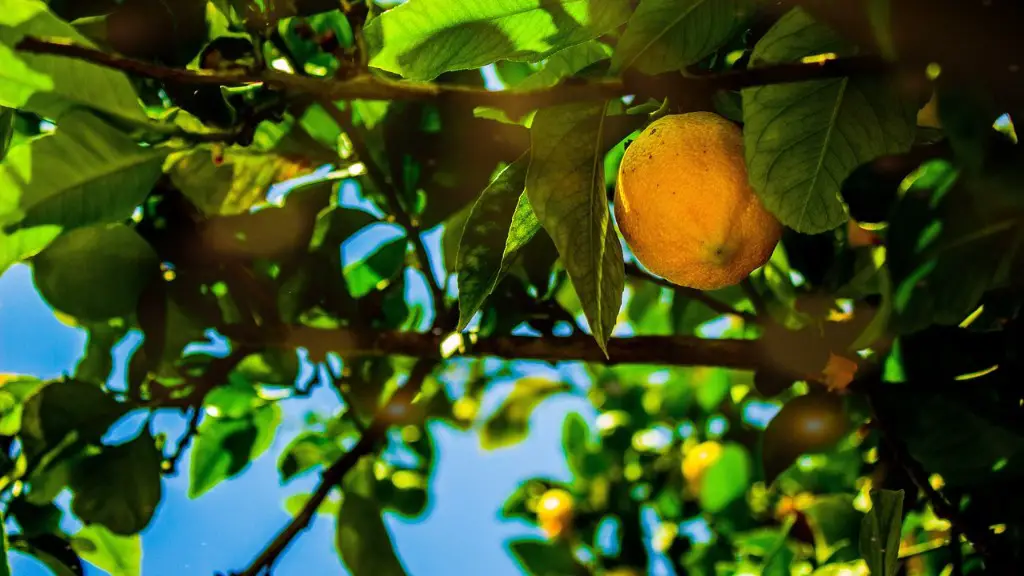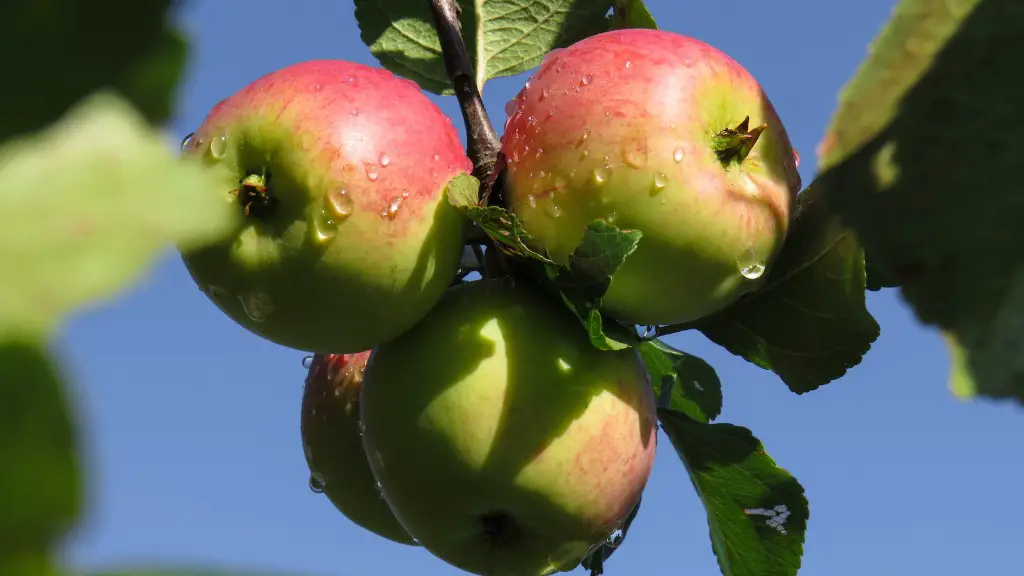The lemon tree is an excellent addition to the home garden, providing delightfully tart fruit and lovely foliage in the springtime. However, getting the lemon tree to grow leaves can be a challenge. The good news is, it is possible to get your lemon tree to grow leaves with the right information and a bit of patience.
The most important thing when trying to get any tree to grow is proper care. To ensure your lemon tree is healthy enough to produce leaves and fruit, you should start with a quality soil mix and ensure that the tree receives fertilization, pruning, and adequate watering and sunlight. Planting the lemon tree in an area where there is full sun throughout the day will help it grow properly.
Once the tree is planted, pruning should be done with care and caution. This can help the lemon tree to grow in an even and balanced way, allowing the tree to produce more dense foliage with smaller, more attractive leaves. The time of year when pruning should occur depends on your individual climate, as different climates have different optimal pruning times.
Fertilizing your lemon tree regularly is important for helping it to grow large, healthy leaves. Fertilizers that are rich in nitrogen are the most effective, as they can help the soil to become more rich in nutrients. However, it is important to not over-fertilize, as this can cause the roots and other parts of the tree to become burned or damaged. Applying fertilizer in early spring is the best time to get the most benefit.
Watering the lemon tree is also essential for good leaf growth. The soil should be allowed to dry out completely between watering, and never let it remain soggy. This can help to prevent root rot and other diseases, which could harm the tree. During the summer months, water the tree more frequently to prevent drought stress, making sure to bury the water deep into the soil.
Finally, the lemon tree should be protected from extreme weather conditions and pests. In the winter months, it may be vulnerable to frost, so you should make sure to provide adequate insulation and protection. During the summer months, protect your lemon tree from pests such as aphids by using neem oil or spray on pest repellents. Taking proper care of your lemon tree will go a long way towards helping it to grow beautiful, healthy leaves.
Adding Mulch
Adding a layer of organic mulch around the lemon tree can help add nutrition and improve the soil quality. Mulch helps protect the soil against extreme temperatures, retaining the moisture to ensure the tree is able to absorb enough water. It also adds organic content to the soil, helping to provide important nutrients for the lemon tree.
Ideally, the layer of mulch should be around eight to ten inches deep, and the mulching material used should be organic such as straw, leaves, or compost. The distance from the trunk of the tree should be around six inches, to minimize the chance of pests and other harmful organisms living in the mulch.
Adding mulch is a great way to assist with the growth of lemon tree leaves, as it helps to ensure that the tree is receiving enough nutrition and sunlight. Be sure to check the mulch regularly, as it can break down and need replacing or replenishing. Too much mulch or mulch that is too deep can make it difficult for the roots to receive adequate amount of oxygen and can potentially lead to the invitation of pests into the area.
Protecting Against Frost
In colder climates, frost can be one of the main factors that can stop the growth of leaves on your lemon tree. Frost can severely damage the leaves, flowers, and other parts of the tree. Even in mild climates, frost can still cause issues, especially during the winter months.
To protect your tree from frost, start by placing the tree in an area that is sheltered from strong winds and frost-producing air. If this is not possible, then use wrap the tree for added protection. Burlap, blankets, or bubble wraps are all good options, as they can insulate the tree against the cold and frost. Be sure to not wrap too tightly as this can cause the tree to overheat, leading to potentially damaged foliage.
You can also place a frost cover over your tree if the temperature is expected to drop down below freezing. Plastic covers are best as they can keep the tree warm, while also allowing a bit of light in. If the temperature is expected to stay low, then add some extra insulation such as straw, cardboard, or even newspaper, to further protect the tree.
Frost can be a major factor that can prevent your lemon tree from growing leaves, but with the right protection, your tree should still thrive. Taking the time to insulate and keep your tree at a controlled temperature can make all the difference.
Preventing Nutritional Deficiencies
Nutritional deficiencies are one of the main issues when it comes to lemon tree growth. This is caused by inadequate amounts of essential nutrients, such as nitrogen, potassium, and phosphorus. Without these nutrients, the leaves will become sluggish and weak, eventually leading to leaf fall.
Regular fertilization is key when it comes to preventing nutritional deficiencies. The fertilizer should contain the required essential nutrients in the right amounts. Be sure to check the labeling of the fertilizer carefully, as the amounts can vary drastically. If unsure, contact a local arborist or horticulturist to ensure the right type of fertilizer is used.
Organic compost and manure can also be used to amend the soil, helping to add essential nutrients to the soil. These organic materials provide the additional benefits of aeration and moisture retention. For best results, the compost should be added twice a year, once in the spring and once in the fall.
In some cases, nutrients can be added directly to the foliage of the tree through foliar feeding. A foliar feed solution should be added every few weeks in the spring and summer months to ensure the tree does not suffer from any nutritional deficiencies.
Good nutrition is essential for the health of your lemon tree, and should not be overlooked. By providing the right nutrients and helping to amend the soil, your lemon tree should be able to grow strong, healthy leaves.
Gathering Nutrients From the Air
In addition to providing the right nutrition, it is also important to ensure the pollen and other nutrients are getting to the leaves of the tree. This can be done by providing a steady supply of nitrogen to the surrounding foliage and air, as well as through the use of bees and other pollinating insects.
Bringing bee-friendly plants into your garden can help to bring the right insect life to the area, to help with naturally pollinating the tree. These plants can also act as a food source for the other beneficial insects, helping to keep the tree healthy.
Another method for bringing nitrogen to the tree is through using nitrogen-fixing bacteria and compost teas. These bacteria can fix nitrogen from the air and deposit it into the soil, helping to provide an extra boost to the tree. Compost tea is a liquid form of compost, which can be sprayed onto the leaves of the tree to provide essential nutrients.
By providing essential nutrition and bringing in beneficial insect life, the lemon tree should be able to get the nutrients it needs to ensure strong and healthy growth.
Disease Protection
Finally, it is important to take precautions to prevent diseases and pests from attacking the tree. By regularly monitoring the foliage and branches of the tree, it is possible to identify any potential pests or fungal infections early and take the necessary action.
One of the most common diseases to look out for is scale, which can cause damage to both the foliage and the twigs. An early sign of scale is small bumps or discoloured spots on the leaves, which should be treated with an insecticidal soap. For serious infestations, neem oil or other harsher chemical sprays can be used.
Fungal infections are also common, and can prevent leaves from growing properly. Signs of a fungal infection include yellow spots, mould or discoloured leaves. These infections can be prevented by keeping the area free of waterlogging, and providing enough air movement to the area to prevent humidity build-up. Fungicides can also be applied to help prevent or treat any existing infections.
Insects and fungal infections can seriously damage a lemon tree, and should be treated promptly. By monitoring the tree and providing adequate protection, it is possible to keep the tree healthy and ensure abundant foliage growth.




